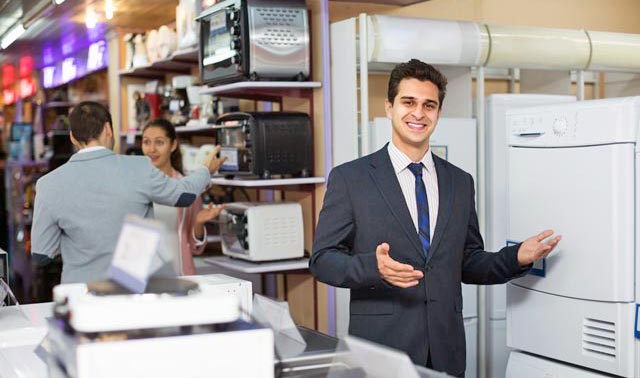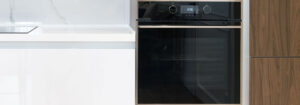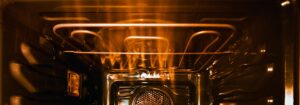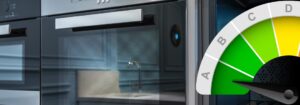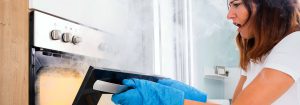Microwaves have become an indispensable part of modern kitchens, offering convenience and efficiency in reheating and cooking. However, improper use can lead to safety hazards, suboptimal results, and damage to the appliance.
This guide aims to outline common mistakes and provide guidelines to help our customers maximise the benefits of their microwave ovens.
1. Using Non-Microwave-Safe Containers
Microwaving food in containers not labelled as microwave-safe poses serious risks. Certain plastics, aluminium foil, and metal containers can cause sparks, fires, and the release of harmful chemicals. Always use containers specifically designed for microwave use to ensure safety.
Microwave-safe containers are specifically designed and labelled to be used in microwave ovens without posing a risk of melting, warping, or releasing harmful chemicals when exposed to microwave radiation.
2. Microwaving Sealed Containers
Microwaving sealed containers, particularly those with airtight lids, can lead to pressure build-up and explosions. Prior to microwaving, ensure lids are loosened or sealed packages are opened to allow steam to escape.
Additionally, if using sealed packages (such as pre-packaged microwave meals), it’s essential to follow the package instructions, which often include perforations to prevent pressure build-up.
3. Microwaving Eggs in Shells
Microwaving eggs in their shells can result in explosions due to steam build-up. Crack eggs into a microwave-safe container, and pierce the yolks to prevent accidents.
4. Microwaving Dry or Low-Moisture Foods without a Cover
Dry or low-moisture foods like bread or pizza can become dry and rubbery when microwaved without a cover. Microwaves work by producing electromagnetic waves that heat water molecules in the food. Dry or low-moisture foods, lacking sufficient water content, can heat unevenly and may become excessively crispy or hard if not covered.
Additionally, microwave ovens can have uneven heat distribution, leading to hot spots in certain areas. Covering the food helps distribute the heat more evenly, promoting consistent cooking throughout the dish.
5. Microwaving nothing or an Empty Container
Operating a microwave with nothing inside or with an empty container can lead to damage.
The microwave oven is designed to transfer the energy it generates to the food or liquid inside. When there is no food or liquid to absorb the microwaves, they can bounce around the interior of the microwave, creating a high-energy environment. This can lead to overheating of the microwave’s internal components, such as the magnetron (the device that generates the microwaves), which could result in damage to the oven.
To avoid these risks, it’s crucial always to run a microwave oven with food or a microwave-safe container containing liquid inside.
6. Not stirring or Rotating Food
Microwaves have a tendency to create uneven heating patterns within the oven. Stirring or rotating food during the cooking process promotes even heating and prevents hot spots.
Some recipes may provide specific instructions for stirring or rotating during microwave cooking. Follow these guidelines for the best results.
7. Microwaving Food in Aluminium Foil or Metal Containers
Metal reflects microwaves, causing sparks and potentially a fire. This is because the concentrated electromagnetic waves can generate electric currents in the metal, resulting in sparking. This is a significant safety risk that can result in damage to the microwave, injuries, and potential damage to surrounding kitchen items.
Never use aluminium foil, metal containers, or utensils with metal components in the microwave. This includes items with metallic trim or decoration. Transfer food to a microwave-safe container before reheating.
8. Putting the microwave in the wrong place
Microwaves generate heat, and proper ventilation is crucial. Avoid placing the microwave in an enclosed space without sufficient airflow. This can cause the microwave to overheat and reduce its efficiency.
Ensure that there is enough space around the microwave for proper ventilation. Check the manufacturer’s guidelines for the recommended clearance space on all sides of the appliance.
9. Neglecting to Clean the Microwave Regularly
Regular cleaning is essential to prevent the build-up of food residue and unpleasant odours. Clean up spills and splatters as soon as they occur to prevent them from hardening and becoming more difficult to clean.
Before starting the cleaning process, turn off the microwave and unplug it from the electrical outlet for safety.
By adhering to these guidelines, users can enhance the safety and efficiency of their microwave usage. Awareness of potential pitfalls and adopting best practices will contribute to a positive and trouble-free microwave cooking experience. Always consult your microwave’s user manual for specific instructions and recommendations tailored to your appliance.
